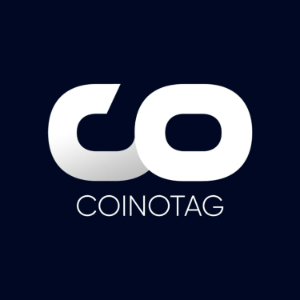Interview | HIVE CFO: Hydro-cooled mining and AI cloud give us an edge post-halving
9 min read
As Bitcoin mining enters a new chapter post-halving, HIVE Digital Technologies is taking a measured, ambitious approach to growth. In this interview, Darcy Daubaras, CFO of HIVE, offers an inside look at how the company plans to scale its hashrate to 25 EH/s by the end of 2025 while sticking to its no-debt philosophy and keeping a close eye on operational discipline. Daubaras explains how HIVE is balancing speed with sustainability. It is interesting to note that HIVE’s story isn’t just about mining . The company has also made an early move into AI and high-performance cloud services, using its green data centers to diversify beyond crypto and build long-term resilience. Daubaras explains how this dual focus between Bitcoin ( BTC ) and computing gives HIVE a competitive edge, especially as ESG concerns and energy costs dictate the winners and losers in the mining industry. For investors and industry watchers, it’s a rare glimpse into how one of the sector’s most forward-thinking firms is positioning itself for the future. Below is the complete Q&A with Darcy Daubaras. crypto.news: HIVE is undertaking a massive hashrate expansion with the goal of 25 EH/s by late 2025. You already hit 10 EH/s as of May. Your goal still represents a further increase of around 2.5x in capacity. What are the biggest execution risks in scaling up this rapidly, and how are you managing these challenges to ensure you meet your 25 EH/s goal on time? DD: Scaling to 25 EH/s is an ambitious objective, but we are firmly on track. However, rapid expansion at this scale naturally introduces execution risks, including global supply chain volatility, hardware logistics, and tight construction timelines. We actively manage these risks through a combination of disciplined project planning, phased deployments, and strong local execution. Our partnerships with trusted vendors and our local presence at each site provide us with critical visibility and control at every stage of the buildout. In Paraguay, for instance, our operations are led by Country President Gabriel Lamas, a seasoned electrical engineer with over two decades of experience in large-scale infrastructure and energy projects throughout Latin America. Under his guidance, we are constructing high-performance, hydro-powered data centres designed for long-term reliability, grid efficiency, and sustainability. His deep understanding of energy systems ensures that as we scale in South America, we are not just growing quickly, but with precision and resilience. CN: Are there any financing challenges to scaling your operation, considering your ‘no debt’ stance? Will you deploy more of your Bitcoin treasury or raise capital if needed, or can HIVE continue working towards its goals through operational cash flow? Speaking of which, how do you decide when to hold mined BTC versus when to liquidate or use it for corporate needs? DD: Using Bitcoin from our treasury to fund growth gives us flexibility without incurring debt; however, it requires disciplined timing and robust treasury management. Given Bitcoin’s historical volatility, we are cautious to structure transactions that provide downside protection and potential buybacks. We only deploy BTC when it presents clear, accretive growth. Our goal is always to safeguard long-term upside while responsibly funding accretive expansion. CN: HIVE has aggressively invested in next-gen mining hardware, such as the S21+ Hydro ASICs for your fleet. I’m not going to pretend to understand what is happening ‘under the hood’, but perhaps you can explain how these state-of-the-art, hydro-cooled machines give HIVE an edge over competitors in terms of performance or unit economics? Are these tools sufficient for your needs out of the box or do you need to explore further in-house optimization to improve efficiency and hash rate density? DD: The S21+ Hydro ASICs represent a major leap forward in mining efficiency, and we’ve made a deliberate bet on this technology as a cornerstone of our next growth phase. Hydro-cooled ASIC miners are environmentally responsible due to their superior energy efficiency and reduced environmental impact. Liquid cooling requires less energy than traditional air systems, lowering total site power consumption and improving power usage effectiveness.. These systems also eliminate high-speed fans, cutting noise pollution and making them more suitable for community integration. The stable thermal environment extends equipment life, reducing electronic waste. Additionally, hydro-cooled setups are often paired with renewable energy sources like hydropower, further minimizing carbon footprint. Together, these factors make hydro-cooled miners a more sustainable choice for responsible Bitcoin mining operations. At HIVE, we see hardware as just one part of the equation. It’s how you deploy, tune, and manage that hardware, especially at scale, that really sets leaders apart. As such, we’ve developed proprietary firmware optimizations that fine-tune voltage and frequency settings to push performance beyond factory specifications while maintaining energy efficiency. CN: HIVE reported an approximate 35% gross operating margin in fiscal 2024. However, since the 2024 halving, industry economics have obviously tightened while network difficulty is at an all-time high. With that said, what margin profile do you expect for HIVE in the coming quarters or full fiscal year? DD: Sustainability throughout all market cycles is a core aspect of our strategy. At a Bitcoin price of $120K, our gross mining margin is roughly 65%, with a breakeven hash price close to $20. Nevertheless, we operate with one of the most streamlined teams in the industry, maintain the lowest G&A expenses among our peers, and are highly disciplined in our capital allocation. This efficiency keeps our cost structure competitive, enabling us to stay profitable even if Bitcoin falls below $100K. CN: How does your diversification into GPU cloud services or AI computing complement your core Bitcoin mining business, or is this just a natural expansion? Do you envision HIVE’s green data centers eventually servicing a larger share of AI, machine learning, or other cloud workloads as a hedge against crypto cycles, and can this become a significant revenue stream or competitive advantage for HIVE in the long run? DD: Our entry into HPC and AI cloud services isn’t a pivot. In fact, HIVE was the first Bitcoin miner to launch an AI strategy, seizing the opportunity right after Ethereum transitioned to proof-of-stake. We repurposed our GPU infrastructure early and deliberately, offering high-performance, sovereign AI compute to enterprises, research institutions, and other mission-critical users. That foresight is paying off as BUZZ HPC is already reaching revenue milestones ahead of schedule. As AI and data centre infrastructure increasingly become national security priorities, we see enormous tailwinds driving demand for trusted, green compute. This is also smart risk management. When crypto markets soften, AI compute demand remains robust. Over time, we expect our green data centres to power both the blockchain and AI economies. That dual engine gives HIVE a sustainable competitive advantage and a pathway to long-term, diversified revenue growth. CN: How are you preparing for potential downturns or unexpected shocks in the Bitcoin market? Do you utilize any hedging strategies to protect against price swings, or is HIVE essentially fully exposed to Bitcoin with confidence that low costs and a strong balance sheet will carry you through any bear market? Or, do you just HODL and hope for the best? DD: Our belief in the long-term value of the Bitcoin network is central to our strategy. However, we manage risk through structural advantages such as minimal debt, low operating costs, and flexible treasury management. Our fleet is designed to endure downturns with discipline. We may monetize BTC when it facilitates accretive growth, but we’re not forced sellers. Our philosophy is straightforward: strong balance sheet, efficient operations, and long-term conviction. CN: The Bitcoin mining sector as a whole is under increasing ESG scrutiny from regulators, environmental groups, and even investors concerned about energy consumption and carbon emissions. We’ve seen some jurisdictions consider moratoriums or bans on mining (Paraguay’s debate being one example), and miners are now keen to prove their climate credentials. In your view, is the industry doing enough to address these concerns? How is HIVE contributing to improving the narrative around Bitcoin mining’s environmental impact? DD: The ESG debate in mining is valid, but it often lacks nuance. HIVE has always been a renewable-first miner. Since our inception, we’ve prioritized green energy in Iceland, Sweden, Canada, and now Paraguay. We believe the industry must lead with transparency, accurate emissions data, and proactive grid integration. We’re also working to shift the narrative: Bitcoin mining can provide a net benefit to energy systems by stabilizing grids, monetizing stranded power, and supporting local communities. At HIVE, we support that claim with action and investment. CN: Do you anticipate a shakeout ahead, where higher-cost or over-leveraged miners struggle and network growth slows? How does a company like HIVE position itself in this scenario? Are you preparing to capture market share from potential drop-outs, or even to acquire assets/equipment from distressed miners? DD: A shakeout is not only likely, but also healthy. The post-halving landscape has separated efficient operators from the rest, and HIVE is uniquely positioned to benefit. We run lean, avoid leverage, and operate at scale using renewable power. If distressed assets enter the market, we’ll be opportunistic, but only if they meet our stringent ROI and ESG criteria. This is a cycle where resilience prevails, and that’s where we’ve focused our strategy. CN: How does HIVE approach site selection and energy procurement? With your large Paraguay hydro projects, it seems you’ve locked in relatively low-cost, renewable power. Are you looking at other geographies with cheap power for future expansion, or do you feel your current mix already provides a competitive enough energy cost profile? DD: Energy is crucial in mining, and we’re precise in how we assess jurisdictions. We seek low-cost renewable energy, regulatory stability, and grid reliability. Paraguay meets all these criteria and more, which is why it’s now a key part of our global fleet. However, we’re not pausing here. We’re actively investigating further opportunities, as diversification aids us in mitigating geopolitical and operational risks while securing low-cost energy for the long term. CN: Curious as a follow-up from the previous question, if Paraguay is such an ideal location for your operation, why not base 100% of your operation there? What exactly is the benefit of geographical diversification? DD: Paraguay is politically stable and offers abundant hydropower, which is why we chose to invest there. However, like any jurisdiction, risks exist. These include regulatory changes, limitations in grid infrastructure, and regional trade dynamics. We have built strong relationships with the government and work closely with local utilities to ensure alignment. By investing in grid upgrades and developing local talent, we are helping to build long-term resilience into our operations. Nonetheless, our goal is global resilience; while Paraguay is our flagship, our operational playbook remains multi-site and multi-country. CN: Some investors see (Micro)Strategy primarily as a proxy for Bitcoin exposure rather than a software company. Given that HIVE also holds BTC on its balance sheet and now runs data centers and HPC operations, how do you want investors to view HIVE? Are you basically one part miner, one part digital asset infrastructure play, or a de facto Bitcoin ETF? Do you feel the need to market yourself as a more balanced alternative to Strategy’s ‘infinite money glitch’ reputation? DD: HIVE is a new breed of Bitcoin infrastructure company. Long before the latest wave of corporate Bitcoin adopters, HIVE became the first public company to hold BTC on its balance sheet. In many respects, we helped define the Bitcoin treasury model. However, we’re not merely a hashrate story or a BTC proxy. We’re building renewable-powered digital infrastructure with two distinct, complementary monetization layers: Bitcoin mining and high-performance computing. Consider us as a green data centre business operating at the intersection of blockchain and AI. Unlike companies focusing on short-term quarters, HIVE is dedicated to building sustainable infrastructure for decades to come. We’re creating long-term financial and digital sovereignty while providing investors with diversified exposure to both decentralized networks and the compute layer powering the next generation of innovation. CN: Do you think there’s any room for strategic collaboration (or outright acquisitions) between mining firms and treasury-heavy companies like Strategy? Have you been approached by Strategy for any discussions? Or are you too fundamentally different on opposite sides of the Bitcoin ecosystem to create any synergies? DD: We respect what Strategy has built as a treasury-focused BTC vehicle, but our models are fundamentally different. As a traditional Bitcoin miner, we differ from Strategy in that we generate Bitcoin by securing the network through high-performance computing infrastructure. Our business model relies on operational efficiency and energy strategy. In contrast, Strategy is a software company that holds Bitcoin as a treasury asset. They gain exposure through purchases, not production. While both models benefit from Bitcoin appreciation, miners actively contribute to the ecosystem, whereas Strategy is primarily a strategic investor.. While we haven’t had direct discussions with them to date, we’re always open to exploring strategic partnerships if they create value for shareholders and align with our ethos of operational discipline.

Source: crypto.news



